Exploring Microsoft Fabric and its Impact on Power BI
Exploring Microsoft Fabric and
its Impact on Power BI
- July 12, 2023
- 5 Min Read
- Stephanie Bruno
Exploring Microsoft Fabric and its Impact on Power BI
Power BI has solidified its position as a top-tier leader in the Gartner Magic Quadrant for analytics and BI platforms through continually listening to users and enhancing and expanding features. With its robust capabilities, Power BI empowers users to effortlessly convert raw data into compelling visualizations and interactive reports. Building upon this success, Microsoft has now unveiled Fabric, an all-in-one SaaS analytics solution that seamlessly integrates data and analytics tools across the entire data lifecycle into a single, comprehensive platform. Additionally, Copilot in Power BI is an AI-powered assistant to help users create more effective and efficient reports and gain automated insights.
In this entry, we will explore what the release of Fabric means for organizations already using Power BI, how they can help expand users’ skills, and the impact on costs.
About Microsoft Fabric

Image credit: Microsoft
Microsoft Fabric introduces a groundbreaking approach to data analytics, designed to tackle the complexities of modern data landscapes. By leveraging the power of artificial intelligence (AI), Fabric enables businesses to gain actionable insights and make data-driven decisions with ease.
With the elimination of the reliance on data and analytics services from multiple suppliers, you can now execute data integration, data engineering, data storage, data warehousing, real-time analytics, data science, business intelligence and governance on a single unified, AI-powered, SaaS platform, that’s the beauty of Fabric.
I’m already using Power BI. Do I have to migrate to Fabric?
No. There is no migration required. Fabric capabilities are built into the Power BI experience, but if you choose to continue using Power BI exactly as you are today, you can do so with no impacts to cost or resources. Power BI remains the core tool for data analysis and visualization, empowering users with its capabilities. However, Fabric offers so many new features that we highly recommend trying them out while they are free in public preview.
How will Fabric make the Power BI experience better?
New features! While Power BI continues to thrive, Microsoft Fabric introduces some exciting new capabilities that will enhance and simplify your data analytics journey. Some of these are:
Feature #1: Direct Lake mode
By loading data into Fabric Lakehouse tables instead of importing into a Power BI dataset, you can take advantage of the speed of import with the convenience of DirectQuery’s real-time updates. This allows you to make changes to the data in the Lakehouse or Warehouse and instantly see them in Power BI reports, without needing to refresh, but at lightning-fast speeds.
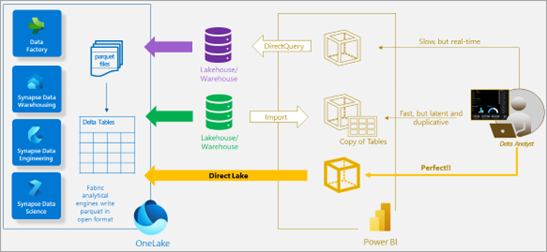
Feature #2: Dataflows Gen2
You might be wondering how you get the data into the Lakehouse to utilize Direct Lake mode. You can use Power Query in a Dataflow (Gen2) in Fabric to load the data to a Lakehouse, just as you would traditionally load to a Power BI dataset. In fact, the new dataflows enable appending data in addition to overwriting every time it runs. But dataflows aren’t the only way to load data into the Lakehouse – there are now many more tools at your disposal, such as data pipelines and Spark jobs.
Feature #3: Robust Data Engineering
With the addition of data factory pipelines, Spark jobs, and notebooks to the toolbelt, it’s now possible for different personas to collaborate on ingesting and transforming data in a warehouse or lakehouse. With Power Query alone, for example, we could not delete a subset of data from a dataset. With these other tools at your disposal, you can make updates to data in the lakehouse that will be immediately reflected in the Power BI dataset(s) connected to it, taking advantage of Direct Lake mode. By combining different tools and allowing developers to use what they’re comfortable with, you can more quickly and easily get your data in the form it needs to be in.
Feature #4: SQL Endpoint for the Lakehouse
Now that we’ve covered the quantum leap forward with Direct Lake and you’re convinced that a Fabric Lakehouse is a beautiful place for your Power BI data model to live, you can also make use of the SQL endpoint that comes with the Lakehouse. The (read-only) SQL endpoint allows you to query the delta tables in the Lakehouse (which are essentially the tables in the semantic model) with T-SQL. Many analysts are more comfortable with SQL than with DAX and this gives them the freedom to write exploratory queries against the data in addition to creating visuals or Excel pivot tables. And for those who aren’t comfortable with SQL or DAX, there is a visual query builder to make it even easier.

Feature #5: Data Modeling on the Web
For those who have been wishing for Power BI Desktop for the Mac, this is the answer. It’s now possible to develop complete semantic models and reports on the web without requiring a Desktop. This does not mean that Power BI Desktop will stop receiving updates and improvements. In fact, at Microsoft Build we were given a glimpse of features coming to Desktop soon including the ability to create calculation groups, an integrated DAX query view that provides measure dependency lineage, and Copilot for DAX.
Feature #6: Copilot for Power BI
With Copilot, Power BI users can streamline the report creation process significantly. Copilot’s intelligent suggestions and automated insights enable users to quickly explore data, identify key trends, and create compelling visualizations. Copilot’s AI capabilities help users explore advanced visualization techniques and suggest appropriate chart types, layouts, and color schemes convey insights in the most impactful way. Its AI-powered features extend beyond report creation. It can also assist users in automating data analysis tasks. By leveraging Copilot, users can perform complex calculations, apply statistical functions, and identify outliers or patterns within their data. By incorporating Copilot into your workflow, users can enhance their ability to analyze and present data effectively, saving valuable time and resources.
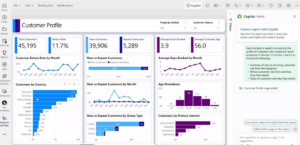
Feature #7: Git Integration
With Microsoft Fabric, Power BI users can integrate their development workflows with version control systems, such as Git. This enables efficient collaboration among team members and facilitates seamless integration with CI/CD pipelines. By utilizing the version control capabilities, users can track changes, manage branches, and roll back to previous versions, ensuring the integrity and stability of their Power BI assets.

Feature #8: Data Activator
Without resulting in action, reports and dashboards are just something to look at and admire. Data insights should make it clear what actions need to be taken to improve outcomes and with Data Activator, Fabric is making it even easier to integrate actions with insights. Data Activator provides a no-code method to find patterns or build triggers on your data and set in motion actions through notifications, alerts, or Power Automate Flows, for example.
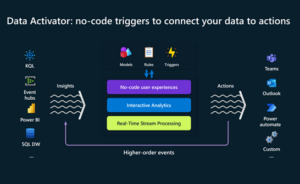
What will Fabric cost? How does licensing work?
Microsoft Fabric Capacities (F SKUs) offer developers the ability to create and share Fabric content across workloads through the familiar interface of Power BI Workspaces. With various resource tiers for memory and computing power, you can choose the best SKU for your application. F SKUs offer flexible usage without any time commitment.
For customers accustomed to Power BI pricing, Fabric pricing will look very familiar. If you want to use Fabric features, you’ll need to purchase an F SKU (see table below) either in addition to a Power BI SKU or instead of a Power BI SKU. In the table below, an F64 is equivalent to a P1, and this is the level provided in the current Fabric trials.
Additionally, you’ll still need Power BI pro licenses (or Premium Per User) for developers who will be publishing or sharing Power BI content (but not Fabric workloads).
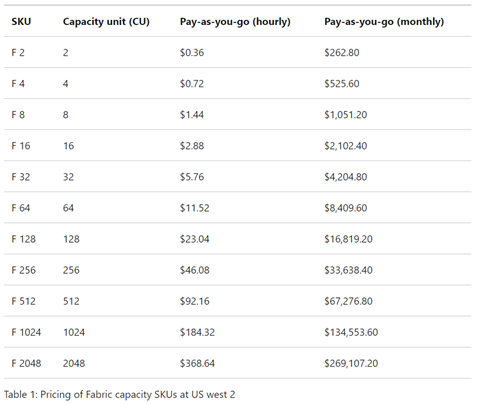
There are some differences between F SKUs and P SKUs, including:
-
- F SKUs are currently available in the Azure portal in a pay-as-you-go model. A reserved instance is similar to the equivalent P SKUs.
-
- F SKUs include Power BI workloads, but not vice versa.
-
- A SKUs (embedded) are still available, but only for Power BI.
-
- OneLake storage will need to be purchased. An example storage rate is provided as $0.023 per GB per month in US West 2.
Determining the best capacity for your scenario can be a challenge, and a pricing calculator will be coming soon. There are a variety of combinations of licensing that are available for different situations. For example, a smaller organization might find that a combination of PPU licenses and a lower F capacity may be the best fit, while a larger organization may need more robust F capacities along with Power BI Pro licenses.
Conclusion
Microsoft Fabric is the biggest leap forward for Power BI since it was first released. Reach out to us at iLink Digital for a free consultation and discover how our expertise can transform your analytics strategy by incorporating Fabric.
About Author
With 10+ years of experience, Stephanie drives efficiencies by optimizing tabular models, migrating AAS cubes to Power BI datasets, and implementing CI/CD processes. She collaborates with cross-functional teams, presents actionable insights, and designs data models for key stakeholders. Her expertise and passion for business intelligence contribute to iLink Systems’ success in data-driven decision-making.
SHARE
Related Blog Posts

Top Technology Trends in Automotive Industry
Technological innovations like AI, autonomous vehicles, and AR are revolutionizing the automotive in...

Telecom Industry Trends: Shaping the Future in 2024
Explore the top 5 telecom trends for 2024: 5G expansion, network virtualization, edge computing, cyb...

6 Benefits of Adopting Low-Code No-Code Platforms for Businesses
Unlock business potential with low-code/no-code platforms: fast development, cost savings, accessibi...

Revolutionizing Industries with Power Platform: Case Studies and Insights
Explore transformative technologies like AI, Quantum Computing, and Industry Cloud Platforms, set to...

Top 6 Emerging Technologies in 2024: A Glimpse into the Future
Explore transformative technologies like AI, Quantum Computing, and Industry Cloud Platforms, set to...

Top Technology Trends of 2023: A Year in Review
Explore 2023's pivotal tech trends: Generative AI's impact, Blockchain's trust-building, Low/No Code...

How Top Industries can benefit most from Data Science & AI
Explore the revolutionary role of Data Science and AI in propelling industries forward. From reimagi...

6 Guided Strategies for Microsoft Power Platform Implementation
The Microsoft Power Platform offers organizations the ability to accelerate digital transformation w...

Choosing the Right Cybersecurity Services Partner: Step-by-Step Guide
In this blog, we'll guide you through the crucial process of selecting the perfect cybersecurity all...

The Value of Regular Security Audits: Safeguarding Your Digital Fortress
Imagine your company's digital infrastructure as a castle and its data as your most treasured posses...

Cybersecurity Awareness Training: Arm Your Team Against Digital Threats
While most organizations invest in state-of-the-art security solutions, there’s often an overlooked...

The Financial Impact of Cyber Breaches on Businesses: Direct & Hidden Expenses
Cyber breaches cost businesses millions, with both immediate and long-term financial impacts. Beyond...

How Technology can help to Bolster Employee Engagement and Happiness
Unlock employee happiness and engagement with technology. Discover strategies like flexible work, co...

Why is Beak the Ultimate AI-Based Solution for Your IT Infrastructure Challenges
Discover Beak - An Intelligent GPS for Infrastructure Monitoring, SOC, NOC & RMM. Streamline ope...

Microsoft Fabric: Unleashing the Power of Next-generation Data Analytics with AI Capabilities
Explore Microsoft Fabric, the cutting-edge data analytics platform that combines AI capabilities wit...

Streamlining Your Migration from Crystal Reports to Power BI
iLink Digital specializes in seamless Crystal Reports to Power BI migration. Explore feature compari...

Streamline Your Business with ServiceNow Bonding: Simplifying Integrations
In today's interconnected business landscape, seamless data exchange between systems is crucial for...

A New Way of Building Attended Automations with UiPath Apps, UiPath Forms & Triggers, and FromIo
Building attended automation is crucial for businesses seeking operational efficiency and improved u...

Conversation AI Vs. Generative AI: Decoding the Difference
In this blog post, we delve into the unique realms of conversational AI and generative AI. We explor...

5 Tips to keep your Salesforce Org Health in Top Shape
As a business leader, it's crucial to prioritize the health of your Salesforce org to ensure optimal...

Ace your Qlik to Power BI Migration in 10 Steps
Are you planning to migrate from Qlik to Power BI? The process can be challenging, requiring careful...

Why Your Business Should Migrate from Cognos to Power BI?
Learn why businesses are choosing to migrate from Cognos to Power BI and how it can maximize the val...
![Aligning DevOps with AWS: Development Stage [Part 4 of 9]](https://www.ilink-digital.com/wp-content/uploads/2023/06/image-400x400.png)
Aligning DevOps with AWS: Development Stage [Part 4 of 9]
Discover the power of DevOps with AWS in the Development stage! Leverage services like AWS Cloud9, C...

Modernization to Elevate IT Resilience: Answering Why & How?
Discover how modernizing your systems can significantly improve your business's IT resilience. In to...
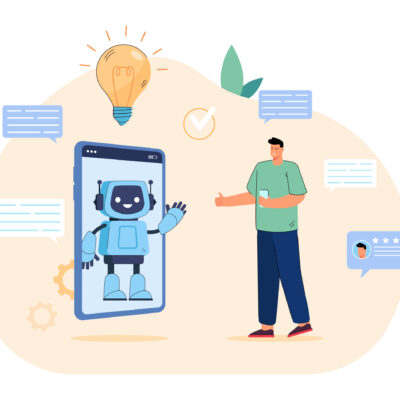
Chatbots for Customer Service: A Must in 2023?
Driven by artificial intelligence, chatbots are shaping the future of customer service with their tr...

5 Strategies for Maximizing Business Value on Your Cloud Journey
In today’s digital era, harnessing the power of the cloud has become an indispensable element for bu...

Maximizing Revenue and Driving Growth with Salesforce Revenue Intelligence
In today's data-driven business landscape, maximizing revenue and driving growth is crucial for comp...

Why Power BI is a Game-Changer for Your Business Intelligence Needs
Power BI is a powerful business intelligence tool that enables organizations to make data-driven dec...

MULTI-TENANCY ON OUTSYSTEMS: Answering How & Why?
OutSystems is a low-code platform that offers multi-tenancy support, a critical feature for modern a...

Greening the Cloud: How Cloud Computing Can Help the Environment?
Cloud migrations have the potential to reduce energy consumption by 65% and carbon emissions by 84%...

Conversational AI in Insurance Industry: Top Use Cases to Explore
Looking to explore the potential of Conversational AI in the insurance industry? Our in-depth blog p...

5 Ways Companies can lower their Carbon Footprint and Contribute to a Greener Future
As we navigate through the climate crisis, the need for businesses to prioritize carbon management h...

Mastering Salesforce Queues: A Comprehensive Guide to Boosting Your Productivity
As a sales professional, you're always looking for ways to streamline your work and be more producti...

6 Technologies to help your Business Achieve Sustainability Goals in 2023
Many corporate leaders are also discovering that sustainability can deepen their organization’s sens...

How IoT is reinventing Manufacturing and Supply Chains Industries in 2023?
IoT has transformed manufacturing operations and supply chain management by increasing operational s...

The Future of IoT: Trends and Predictions for 2023
The Internet of Things (IoT) has come a long way since its inception over a decade ago.
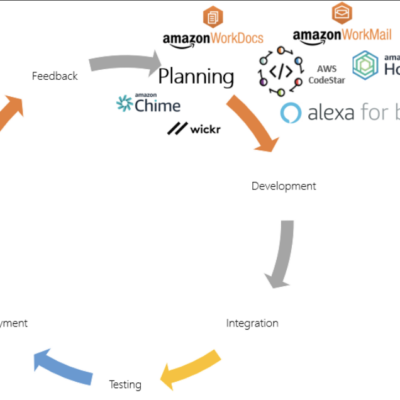
Aligning DevOps with AWS: Planning Stage [Part 3 of 9]
In this article, 3rd in the series, we will discuss the Planning stage of DevOps using AWS and intro...

Cloud-Based RPA: The Next Frontier in Automation
Automation has become a buzzword in the business world, and for a good reason. Companies are embraci...
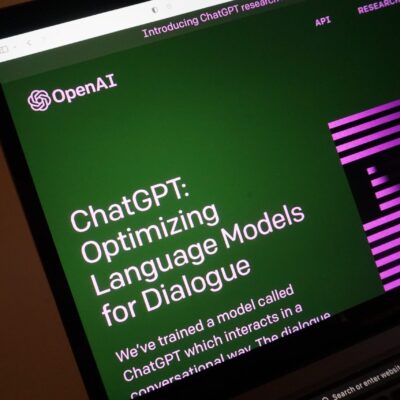
How can Businesses use ChatGPT to upgrade their Customer Services?
Businesses can leverage ChatGPT to take their clients’ experience to the next level. For example, re...
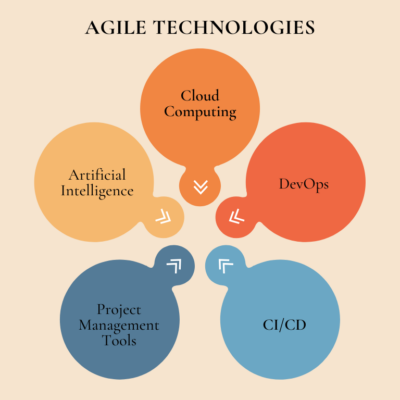
Agile Technologies: Revolutionizing Business Efficiency and Innovation
Businesses that use agile technologies have gained insights, worked faster, and built stronger relat...

Top 7 Salesforce Trends To Follow in 2023
As one of the most powerful CRM platforms, Salesforce assists businesses to build customer databases...

What is Data Mesh? | Architecture, Principles, and Benefits
What is Data Mesh? Data mesh is a decentralized data architecture that groups data according to a pa...

Understanding Data Fabric, its Key Components & Benefits.
Data fabric integrates and connects to your organization’s data while removing the complexities invo...

What is IoT Analytics and Why Business Leaders should care?
48% of companies use IoT in their business. Imagine the amount of customer data being collected. Wit...

Aligning Services with DevOps Stages [DevOps with AWS – Part 2 of 9]
One popular platform for implementing DevOps practices is Amazon Web Services (AWS). In this article...

9 Best Practices for Protecting Data Privacy in 2023 and Why they shouldn’t be disregarded.
The average cost of a data breach is currently $4.35 million, and that amount will only increase. Al...

Modernizing Telecom Operations: ServiceNow Solutions for Supply Chain, Vendor, and Security Management
The telecom industry is undergoing a seismic shift as rapid technological advancements—such as 5G an...

The Rise of Cloud FinOps: Unlocking Cloud Cost Optimization
According to Gartner’s prediction, “Organization spent on Public cloud enablement is pro...

Citizen Developers Can Scale & Work with IT Pros Like Never Before with Microsoft Fabric
When Microsoft Fabric reached General Availability (GA) in November last year, we shared our initial...



